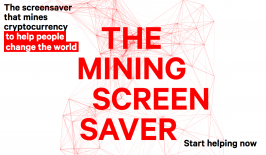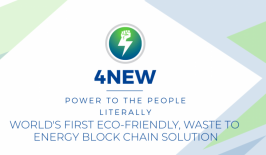No three letters have dominated headlines in recent months more than ‘NFT’. Standing for ‘non-fungible token’ (a name not much clearer than its acronym), NFTs are digital certificates of ownership for digital assets, such as images, videos or tweets. In their short time in the limelight, they have grabbed attention due to the huge amounts of money – often in the form of crypto-currency – which trades hands for their purchase and sale. But their unusual nature, especially their connection to easily replicable digital assets, has also created scepticism and a love-hate relationship online.
However, charities and NGOs are increasingly turning towards NFTs as a means of generating donations and potentially long-term income, but not without controversy.
Wildlife streaming service, WildEarth, is the latest organisation to create digital NFTs for living animals. Following in the footsteps of other organisations, such as NatureSeychelles, WildEarth has minted NFTs for several of its animal ‘stars’, such as Tlalamba – a four-year-old leopard in South Africa’s Djuma Game Reserve. Up to 5 million viewers a month tune in to watch Tlalamba and others live their everyday wild lives, and WildEarth co-founder Graham Wallington hopes NFTs will allow viewers to interact with their favourite animals in a new and supportive way. The sale of digital assets is also seen as less damaging and more reliable than traditional forms of conservation funding such as hunting and tourism.
After purchasing a unique Tlalamba NFT, owners gain access to exclusive images, news updates and even voting rights on the naming of her future cubs. Owners also have the ability to sell on the NFT to others, like a physical piece of art, and generate a profit from the sale. It is hoped, in particular, that the burgeoning trade in NFTs can be used to create ongoing revenue streams.
Currently, each NFT from WildEarth costs around 200 USD, with WildEarth taking 40 percent of the sale. This money is then passed onto the custodian of the animal in question to provide for their care and security. According to WildEarth, the sale of around 1,000 NFTs has already netted the NGO an additional 14,000 USD in funds.
If the NFTs are then sold on secondary markets, the NGO will also receive additional royalties, although it remains to be seen how much of a market for animal NFTs actually exists.
NFTs and The Environment
However, NFTs have also generated quite the debate online. Some of this revolves around the nature of NFTs themselves. An NFT is a certificate of ownership purely for a digital asset, and is not the same as gaining the licensing rights to a piece of art or music. This led some to suggest they are certificates of ownership for assets with no real physical worth. Comparisons to scams, ponzi schemes and even the 17th century Dutch ‘Tulip Mania’ follow. To their defenders, the concept of ownership is not dependent on physical value to generate worth, and is instead taking ownership into the digital age of the 21st century.
But, for conservationists and environmentalists, NFTs have a much more tangible and less debatable impact. Currently, most NFT platforms take advantage of cryptocurrencies such as Bitcoin and Ethereum which have extreme energy footprints. This is largely due to how they ‘proof’ their cryptocurrencies – which is where it gets (even more) complicated. Traditional platforms such as Bitcoin and Ethereum 1.0 use ‘proof-of-work’ concepts to approve its transactions. This requires numerous computers to complete complex calculations to decrypt a secure transaction. All of this requires computer power, often in the form of powerful GPU cards, which all requires energy. With much of this energy coming from non-renewable sources, older cryptocurrency platforms are seen as major contributors to carbon emissions. In many cases, computers are networked into vast ‘mining farm’ operations which increases energy demands further. Ethereum alone may have a carbon footprint equal to Sweden.
As a result, using NFTs to fund conservatism or environmental causes can often face a backlash. In early February, WWF-UK faced a Twitter storm after it announced plans to mint NFTs. Twitter users quickly criticised the decision and even threatened to withdraw their donations from the charity. An almost identical reaction occurred less than three months before when WWF-Germany attempted a similar project.
WWF UK – and WildEarth – were careful to point out they were relying on the Polygon cryptocurrency which works on a different process to Bitcoin and Ethereum. Polygon uses a ‘proof-by-stake’ model, in which transactions are completed not by raw computing power, but via users pledging a part of their crypto-holdings in exchange for fixed rewards once the blockchain has been validated. To many people both systems are likely to boggle the mind, but the important takeaway is that ‘proof-of-stake’ uses much less energy than ‘proof-of-work’, making it a cleaner alternative. The WWF claimed a single transaction on Polygon is equivalent to pouring a simple glass of water.
That Polygon, and proof-of-stake, is a cleaner system is clear, however Polygon still relies on Bitcoin to turn its cryptocurrency into traditional currencies, such as euros, pounds or dollars. This means it still depends, partly, on the dirtier version of the crypto-world.
But there may be improvements on the horizon. Ethereum has also announced their intention to move to a ‘proof-of-stake’ model to reduce their energy footprint and increase their transaction speeds. This is likely to come into force in the following years. For the general public, however, talk of crypto-currency, NFTs and digital ownership still raises eyebrows and the long term success of the concept will likely depend on bringing new blood – and money – into the crypto-community.









